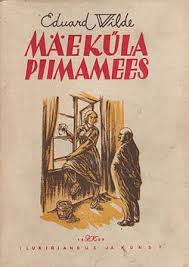Today is International Holocaust Remembrance Day.
On this day many countries remember 6 million Jews, 1 million Gypsies, 250,000 mentally and physically disabled people and 9,000 homosexual men who were murdered by the Nazi Germany between 1933 and 1945.
Like most European countries, Estonia was not spared the horrors of the Holocaust. Prior to 1940 Estonia had been home to a relatively small but thriving Jewish community of just over 4,000. They were Estonian citizens and 200 of them had fought for Estonia in its War of Independence, helping to win freedom for themselves and their fellow countrymen.
Estonia had had sporadic contact with Jews since the Middle Ages but very few had settled on the territory before the 19th century. Tallinn was home to just 40 Jews in 1830 with former tsarist soldiers and tradesmen making up the community’s first members. In 1865 Russian Tsar Alexander II decreed that Jews could settle in Estonia. By 1866 there were 50 Jewish families in Tartu. Tallinn’s first synagogue was completed in 1883 with Tartu’s following suit in 1901. By the end of the 1800s Estonian Jews had made their way from humble beginnings as small merchants to become active in academia with 100 Jewish students studying at Tartu University. Some of them excelled in athletic endeavours too with brother and sister Sara and Rubin Teitelbaum being the best known examples. Sara set 28 national records in various athletic events and her brother Rubin won the Estonian weightlifting championships 7 times between 1927 and 1933. However, their young lives were cut tragically short. Sara died in 1941 of tuberculosis aged just 30. Rubin had remained in his hometown of Tallinn at the time Nazi Germany invaded and occupied Estonia in 1941. He was imprisoned and murdered a few days later.

Tartu Synagogue 1901
Jewish life really began to thrive after Estonia established independence. The first Estonian Jewish Congress was held in 1919 and the young Estonian Republic was very tolerant of cultural, religious and ethnic minorities, including Jews. Liberal laws regarding minority rights allowed Jewish cultural life in Estonia to thrive. Literature societies and theatre companies sprang up everywhere. On 12th February 1925 the government passed the Estonian Minority Law which was one of the most liberal in Europe at the time. By then there were 3,045 Jews in the country; more than the required 3,000 for official recognition as an ethnic minority which they were given in 1926.
By 1934 there were over 4,000 Jews in Estonia officially represented by the Juudi Kultuurivalistus (Jewish Cultural Council). More than half of them worked in business and services and over 11% had a higher education. There were Jewish kindergartens, schools, credit unions and even a doctor’s association.
Cultural and religious freedom ended for Estonia’s Jews in 1940 when the country was invaded, occupied and annexed by the Soviet Union. Cultural associations were banned and between 350 and 450 Estonian Jews were deported to Siberia (10% of all Estonian Jews), a fate they shared with nearly all Estonian intellectuals.
On 22nd June 1941 the Germans had marched into Estonia and driven the Soviets out. 75% of Estonia’s remaining Jews had managed to flee to Finland or the Soviet Union before the advancing German army reached the country. Once Tallinn fell to Germany on 28th August 1941 the SS Sonderkommando 1a unit led by Martin Sandberger systematically murdered nearly all of the 950 or so remaining Jews. These mostly included the old and sick as well as rabbis, professors of Jewish studies at the universities and Estonian Jews who had converted to Christianity. Suspected communists were also murdered by the SS.
German map of the Baltic region showing the numbers of murdered Jews.
So thorough was the onslaught that fewer than a dozen Estonian Jews survived the Holocaust and at the Wannsee Conference on 20th January 1942 the country was declared “cleansed of Jews” (Ger. “judenfrei”). The Germans constructed around twenty more concentration and labour camps on Estonian soil to which 10,000 more Jews from elsewhere in Europe were brought to be murdered. Vaivara and Klooga were the largest of such camps.
Holocaust memorial at the former site of the Klooga concentration camp.
On this day Estonia remembers its fellow citizens who were murdered and driven out of their homeland between 1941 and 1942 for no other reason than being Jewish. We also remember other Jews who were brought to occupied Estonia and murdered. They are gone but their presence in our country and the contribution they made to Estonia both before and after independence was won will never be forgotten.
Epilogue
During the Soviet occupation from 1944 to 1991 a number of Russian speaking Jews from elsewhere in the Soviet Union migrated to Estonia and the country is once again home to a small Jewish community numbering about 1,000. The modern Tallinn Synagogue was dedicated on 16th May 2007 in the presence of then Estonian president Arnold Rüütel. The city is also home to a Jewish kindergarten and community centre. Estonia’s “live and let live” values and political freedoms are once again enabling this small community to flourish.











%2B1880%2Bby%2BEduard%2BBornh%C3%B6he.jpg)



%2B1978%2B(in%2Benglish%2B1992).jpg)
%2B1912%2Bby%2BAugust%2BKitzberg.1.jpg)
%2B%2B1998%2B(in%2Benglish%2B2003)%2Bby%2BJaan%2BKross.jpg)
%2B2007%2Bby%2BJaan%2BKaplinski.jpg)


%2B1953%2Bby%2BKarl%2BRistikivi.jpg)























.jpg)




